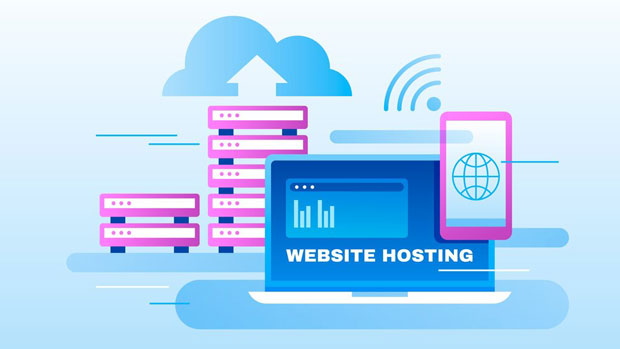residential proxy servers are essential tools for many businesses and individuals who require anonymity, security, and access to geo-specific content. When selecting a residential proxy service, one of the most crucial factors that influences the pricing is the number of available IP addresses. This article explores how the quantity of IPs in a residential proxy service correlates with the pricing structure, and provides insight into why the number of available IPs can impact the overall value of the service. By understanding this relationship, users can make more informed decisions when selecting a proxy service that fits their needs. What Are Residential Proxy Servers and Why Do They Matter?Residential proxy servers are IP addresses provided by real residential devices, rather than data centers. These proxies allow users to appear as if they are browsing from a different location, offering a higher level of anonymity and security than traditional datacenter proxies. residential proxies are particularly useful for tasks like web scraping, bypassing geo-blocks, or accessing region-specific content.One of the key features that differentiates residential proxies from other proxy types is the authenticity of the IPs they provide. Unlike data center proxies, which are often flagged and banned by websites, residential proxies offer a more legitimate appearance because they are tied to actual residential users' internet connections. This makes them an attractive option for businesses or individuals who need to perform tasks like ad verification, SEO monitoring, or social media management without facing blocks or restrictions.How Does the Number of Available IPs Affect the Price?When choosing a residential proxy service, customers are often presented with pricing tiers based on the number of available IPs. The quantity of available IP addresses directly influences the cost because it determines the service’s scalability, effectiveness, and the potential for evading detection. Here are a few key reasons why the number of IPs matters for pricing:1. The Role of IP Rotation in Proxy ServicesOne of the primary functions of a residential proxy service is IP rotation, where users are assigned different IP addresses at regular intervals. This rotation helps avoid detection and prevents services from being blocked by websites. A larger pool of IPs means that the proxy provider can offer more frequent rotations, reducing the chances of hitting a rate limit or being flagged by websites.A service with a limited number of IPs may have a higher risk of exposing users to detection, as fewer IPs are available for rotation. As a result, services with more available IPs tend to cost more because they offer a better level of security and performance. This increased security is essential for high-volume users or businesses that need to perform large-scale tasks, such as scraping large datasets from multiple websites.2. Geo-Targeting and Location DiversityAnother important factor in the pricing of residential proxy services is geo-targeting. Businesses often need to access content that is geographically restricted, and the ability to use IPs from various locations is crucial. The more IPs a proxy provider offers, the greater the diversity of geographic locations available.Proxy providers that offer IPs from multiple countries and cities tend to charge higher rates because they provide access to a wider range of locations, which enhances the user’s ability to target specific regions. This geo-targeting ability is vital for businesses that need to test websites, ads, or content across different markets. For users who only require a limited selection of locations, a smaller pool of IPs might suffice, resulting in a lower price.3. Scalability and Usage FlexibilityFor businesses that require high-volume proxy usage, scalability is a critical consideration. A proxy service with a larger number of available IPs can handle higher traffic and more simultaneous requests without sacrificing performance. This is particularly important for users who need to scrape large amounts of data, conduct automated tasks, or manage multiple accounts across various platforms.The more IPs available, the greater the flexibility the service offers in terms of scaling usage. Providers that offer a large number of IPs typically cater to businesses with significant needs and, as a result, charge more for their services. However, for smaller-scale users or individuals, the need for such a large IP pool may be unnecessary, allowing them to select a more affordable option with fewer IPs.4. Avoiding IP Blocking and Anti-Scraping MeasuresWebsites and online services often deploy anti-scraping measures to detect and block automated bot traffic. The effectiveness of these measures can vary, but proxies with a larger pool of IPs are more likely to avoid being detected. A larger set of IPs reduces the risk of multiple requests being sent from the same address, which would otherwise trigger a block.If a proxy service provides only a small number of IPs, the likelihood of hitting a block increases, as the same IP may be used repeatedly for different requests. Proxy services with more available IPs distribute the requests across a broader set of IPs, significantly decreasing the risk of detection and blocking. This increased protection from anti-scraping measures is another factor that drives up the price of proxy services with more IPs.5. Quality of Service and Customer SupportAnother aspect that influences pricing is the quality of service and customer support. Proxy providers with larger networks of IPs often invest more in maintaining their infrastructure, ensuring that the IPs are high-quality and reliable. These providers may offer better customer support, including dedicated account management, faster response times, and more robust technical assistance. This added level of support can contribute to the higher pricing of services with a larger pool of IPs.In contrast, providers with fewer IPs may not offer the same level of service, as their networks are smaller and may be less reliable. As a result, they might offer lower prices, but customers may face issues like slower speeds, downtime, or poor support.6. Market Demand and CompetitivenessMarket demand also plays a role in the pricing structure of residential proxy services. As more businesses rely on proxies for activities like web scraping, ad verification, and data collection, the demand for residential IPs continues to rise. Providers with large numbers of IPs are typically more competitive in terms of pricing, as they can offer better performance and reliability.In highly competitive markets, providers may offer lower prices for smaller IP pools to attract customers, while still charging a premium for services with larger IP pools. The price for residential proxies with more IPs reflects both the operational costs of maintaining a large network and the market dynamics of supply and demand.Conclusion: How to Choose the Right Proxy ServiceIn conclusion, the number of available IP addresses in a residential proxy service plays a critical role in determining the price. Larger pools of IPs offer enhanced features such as more frequent IP rotation, better geo-targeting, scalability, and stronger protection against anti-scraping measures. However, the price increase for services with more IPs is often justified by the added value they provide.When choosing a residential proxy service, users should consider their specific needs. For high-volume tasks that require significant IP rotation, scalability, and geo-targeting, investing in a service with a larger number of IPs may be worthwhile. For smaller-scale tasks or individuals with limited requirements, a service with fewer IPs may be sufficient and more affordable.Understanding the relationship between the number of available IPs and the price of residential proxy services can help users make informed decisions based on their usage needs and budget.
Jul 18, 2025



































































